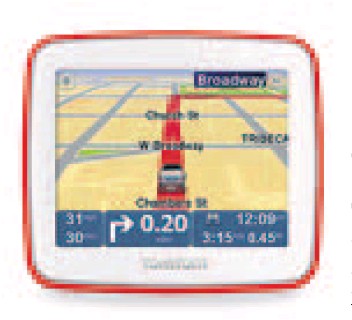Be aware of the buzz on your company and react to it
Danny Bradbury
Sun

Mark Graham, CEO of promotional design agency RightSleeve uses Twitter’s API to stay on top of customer feedback. Photograph by: Tyler Anderson, The National Post, Financial Post
“Cdn travelbugs,” said the public tweet that just flew across the screen. “Anyone used AirCanada’s Int’l flight passes? Trying to find out if one direction can include few days stopover midroute?”
A tweet is a message to the world on Twitter, a micro-blogging service that has had phenomenal success. The short, abbreviated messages (tweets can only be 140 characters) may seem insignificant, but because they are read by so many existing and potential customers, they can carry a lot of weight.
If businesses know how to deal with customer queries and complaints made via Twitter and other social networks, they can improve their customer service by an order of magnitude. But companies normally deal with their customers via phone, the postal service and perhaps email. How can businesses fold these new channels into the mix?
For many, simply monitoring Twitter and responding is enough. It would be impressive if Air Canada saw the public message and responded to the person using the service, at the very least pointing her to a Web page on its site containing an answer. That is what Torontobased Internet hosting company Peer 1 Hosting did.
Peer 1 dedicates employees to monitoring social networking channels including Twitter and Facebook. That came in handy in January, when some of the servers in its Atlanta-based data centre went down.
When the servers went down, the company didn’t fully understand the extent of the problem, or how it was affecting its customer base, recalls Rajan Sodhi, vice-president of marketing and communications for Peer 1. Monitoring Twitter enabled it to pick up more information about what people were experiencing. “Then, we were able to reach out and point people to our forums for more information as we discovered what was happening,” he said.
Pointing Twitter users to an online forum was a good move, said Tim Hickernell, an industry analyst working for Info-Tech Research. “What starts on Twitter doesn’t always end on Twitter,” he says. “I advise that our clients acknowledge the query on Twitter, so other Twitter users recognize that, but if you’re going to start in Twitter, make sure you assess whether to switch channels to resolve the issues.”
Promotional design agency RightSleeve took things up a notch when an innovative design idea backfired. The company designed the gifts included in swag bags for attendees of Mesh 2009, a Web conference held in Toronto. The swag bag included magnetic rocks, designed as stress relievers and business card holders.
“It was my worst nightmare,” said Mark Graham, chief executive and founder of Right Sleeve. He logged into Twitter expecting pleasant comments about the rocks, only to find irate comments, worried the magnetic rocks might wipe data from the hard drives and BlackBerrys carried by Mesh’s tech-savvy audience.
“We were getting dragged through the mud, and I was mortified,” Mr. Graham says. He used Twitter to apologize to the most vocal attendees, and then ‘tweeted’ a link to a YouTube video showing the rocks being rubbed on a BlackBerry, to prove they were not dangerous. People began to see the funny side, and the company’s reputation was restored.
But these activities require manual intervention — a resource few small businesses have. How can a company use social networking tools in a more automated way to get the maximum benefit?
“We have created our own customer relationship management system inhouse. We want to use Twitter’s API to monitor the conversation for any client of ours that happens to be on Twitter,” Mr. Graham says. This copies any tweets into a customer’s record on the system, so salespeople can see what is being said.
Other help desk and CRM systems are getting in on the act. Customer support software ManageEngine now has Twitter integration that lets support personnel see who is talking about their company on Twitter, and reach out to them, to resolve the issue.
But one of the most sophisticated integrations yet has come from online CRM company Salesforce, which integrates Twitter and Facebook support into its ServiceCloud offering. Service-Cloud is a customer service system that is hosted on Salesforce’s own computers. That means its clients can use the software to serve their customers without having to run their own software.
If someone asks a question on Twitter or a company’s Facebook fan page, ServiceCloud can pick that up, says Viviana Padilla, senior manager for product marketing at Salesforce. “You can bring that question into Servicec-Cloud, and use your online database to find an answer and bring it back to the customer,” she says.
Businesses using ServiceCloud can also collect relevant answers to queries from other customers using the social network service, Ms. Padilla says.
Firms can start by training support staff to use social networks, and then at the very least using a free Twitter tool such as Tweetdeck ( www.tweet-deck.com)monitor Twitter. And what of our earlier Tweeter? Will she ever get an answer via Twitter from Air Canada? www.twitter.com/AC_webSaver,its Twitter account for personalized travel deal alerts, seems pretty active.
© Copyright (c) The Vancouver Sun








